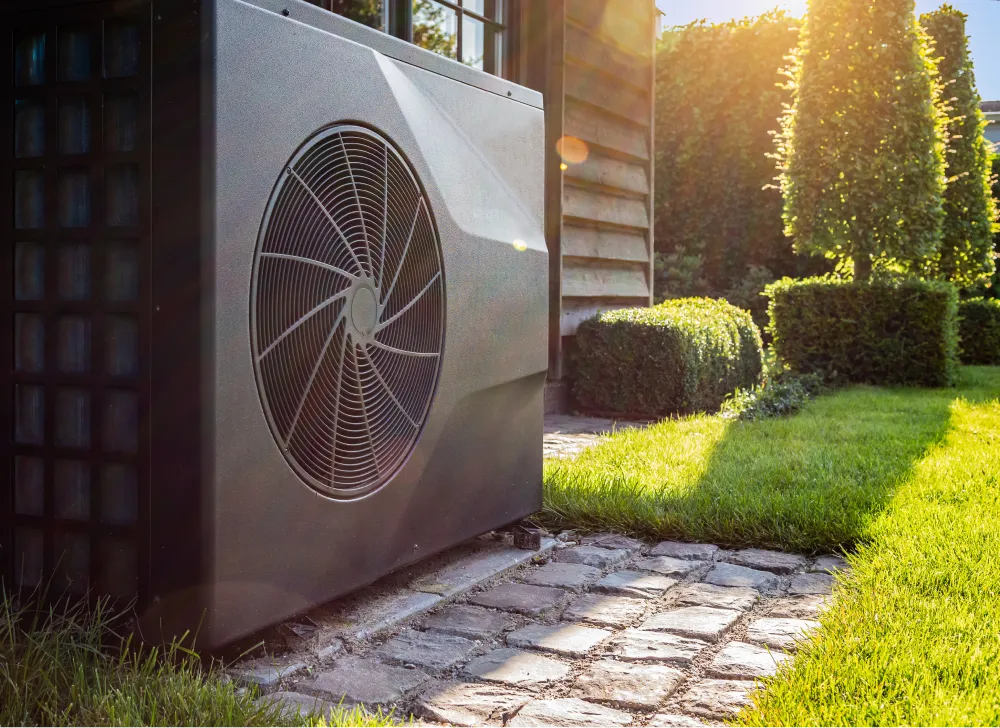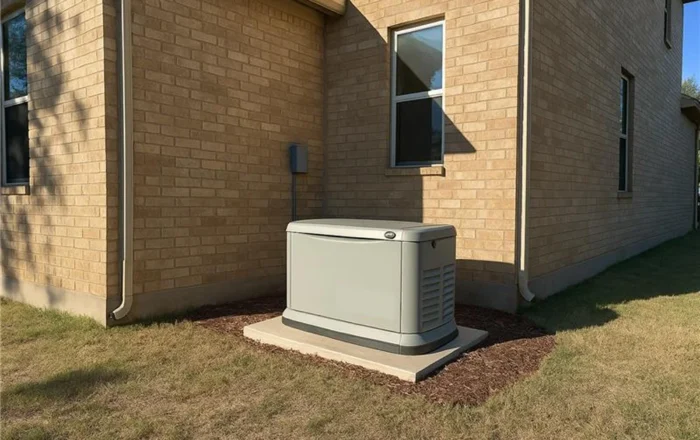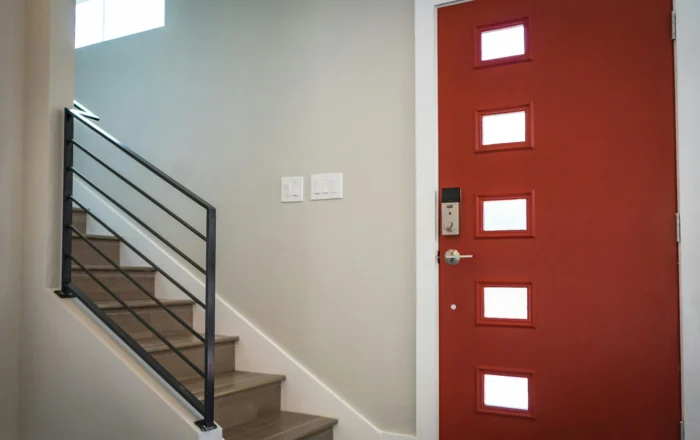How to Choose a Generator for Your Home
6 minute readHow to choose the right generator for your Texas home
Home > Blog > What Is a Heat Pump and How Do They Work?
5 minute read • Last update September 2024

Looking for an energy-efficient way to regulate the temperature in your home? Then you might want to consider investing in a heat pump system.
Despite the name, heat pumps can be used for cooling as well as heating. In this handy guide, we’ll cover the following:
A heat pump is an energy efficient HVAC system that has both heating and cooling functions. This separates heat pumps from central air conditioners, furnaces, and boilers that are capable of only heating or cooling.
A typical heat pump system looks similar to a split AC system with one indoor and one outdoor unit. However, unlike traditional heating and cooling systems, heat pumps don’t actually generate hot or cold air. Rather, they transfer heat from one location to another between the units.
During warmer months, heat pumps extract heat from indoors and transfer it outside. In colder months, the process is reversed, meaning the system absorbs heat from the outdoor air and transfers it indoors to warm the space.
The methodology of how a heat pump works will depend on the type of system you install:
The go-to choice for most homeowners is an air-source heat pump, mainly because they’re relatively straightforward and inexpensive to install. Plus, not all homes have access to water sources or adequate outdoor space to support water or ground-source heat pump installation.
Regardless of the heat source, each type of heat pump works in roughly the same way. Let’s start by explaining the heating mode before considering how heat pumps can also act as a cooling system.
Here’s a step-by-step explanation of how it all works:
It’s essential to note that the heat produced by heap pumps isn’t only for warming rooms via the inside unit. The hot air can also be transferred to the central heating system to provide hot water for taps, underfloor heating systems, radiators, and more.
So, that’s the heating mode explained. But what does a heat pump do when it’s switched to cooling mode? The short answer is: exactly the same thing with the refrigeration cycle reversed. When the reversing valve is open, the heat exchangers and other internal valves simply work in opposite directions to remove rather than generate heat.
Heat pumps are well-recognized for their energy efficiency in both heating and cooling operations. However, overall efficiency and longevity can be affected by:
Provided that heat pump installation is conducted by a qualified professional, you should be assured of proper sizing, adequate insulation, and the right system settings to facilitate optimum heat flows for both hot and cold air. So, in most instances, climate considerations are the primary concern. Let’s take a closer look at how seasonal variations might affect cooling and heating system efficiency.
The short answer is yes. However, just like with other heating systems, a heat pump will have to work harder the hotter it gets. Air-source models, in particular, may be challenged by extreme summer weather because high temperatures reduce the differential between the outside air and the refrigerant in the heat pump, which lowers efficiency.
If you live in a particularly hot area, it’s essential you check Seasonal Energy Efficiency Ratio (SEER) and Heating Seasonal Performance Factor (HSPF) ratings before you have heat pumps installed. Higher SEER and HSPF ratings indicate better efficiency in hot weather conditions.
Other steps you could take to ensure optimal operational efficiency include:
Again, yes. But exactly how does a heat pump work in winter when the air outside is cold?
Even when it’s cold outside, heat energy is still present — although admittedly, the refrigeration process may be less efficient at transferring heat than in milder conditions. Therefore, households expecting particularly harsh winter weather might consider a hybrid heat pump system as an all-encompassing solution.
Hybrid heat pumps combine a furnace or gas boiler for supplemental heating. This allows you to use the pump only to cool and rely on the furnace to warm your house during winter and chilly evenings.
Let’s take a look at a comprehensive list of pros and cons to see how heat pumps stack up against alternatives and more traditional systems.

Texas is known for its hot summers and mild winters, making heat pumps a popular option. In fact, many Texans already rely on heat pump technology, and with nearly 2 million systems installed, there are more heat pumps in Texas than in any other state.
As technology develops further, heat pump balance points are likely to become even higher. What is a heat pump balance point? Short version – it’s the outdoor temperature at which it reaches capacity for effective cooling. This, combined with effective winter operation down to -10 °F, makes heat pumps an increasingly viable option for residents looking to upgrade their existing heating system as climate change continues to make Texas weather patterns even more unpredictable and extreme.
At BKV Energy, we understand the importance of affordable energy. That’s why we’re committed to offering tailored solutions to meet an array of needs and budgets.
By harnessing the power of innovative technologies like heat pumps and pairing them with straightforward energy plans, Texans can enjoy year-round comfort without breaking the bank.
Ready to make greater home energy savings and reduce your utility bills? Enter your zip code to explore our range of low-cost, gimmick-free electricity plans today.
Graham Lumley, Digital Marketing Manager at BKV Energy, leads digital and traditional marketing strategies, focusing on educating Texans about the state's deregulated energy market. With over 8 years of marketing experience, he creates content to help consumers understand and save on their energy bills, bringing a fresh and dynamic approach to the industry.

How to choose the right generator for your Texas home

Energy Saving Tips Home Improvement
Choosing the right energy-efficient door can help Texas homeowners reduce cooling costs and improve home comfort year-round.
Get $50 off your electric bill!
Use code BKVEJOINUS50
Enter your zip code to shop BKV Energy's affordable, fixed-rate Texas electricity plans. Use the promo code for $50 off your electric bill.